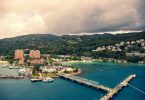November is the beginning of the tourist high season in Thailand, a time of year when the travel industry hikes rates in line with the influx of international visitors looking to escape their own chilly climates.
This high season was supposed to be Thailand’s big comeback story, proving the industry could bounce back bigger and better from the 2010 political violence that kept tourists away.
But images of white beaches, spicy tom yum soup and cold bottles of Singha aren’t on many people’s minds these days. Due to the current flood crisis, most of the country’s hottest tourism destinations are seeing tourist numbers droop to dismal levels.
Floods in Thailand have killed more than 500 people since July, affecting about a third of the nation’s 77 provinces.
In a recent interview with media, Tourism Authority of Thailand (TAT) Governor Suraphon Svetasreni estimated a loss of up to US$825 million in tourism dollars if the flood situation isn’t resolved by the end of the year. But the problem is, very few of Thailand’s tourism destinations are flooded.
The media gives the impression all of Thailand is under water but all of our hotels have yet to experience any floods,” said hospitality magnate William Heineke, whose Minor International owns and operates hotels under the Anantara, Four Seasons, Mariottt and St. Regis brands throughout Thailand.
Originally, the TAT predicted a total of 19.5 million visitors for 2011. That number has been dropped to 19.1 million.
“The unsettling thing is we’ve had huge numbers of cancellations, meetings and conferences across the board in the last 30 days, which is sad because none of Thailand’s tourist destinations, with the exception of Bangkok, are affected,” said Heineke. “So it’s been devastating.”
On a recent visit to Phuket in early November, the tourists clearly hadn’t all disappeared, but numbers were far from the heights characteristic of the start of the high season. Many restaurants and bars were empty, while there were plenty of vacant lounge chairs on the shores of even the most popular beaches.
In Bangkok visitors are even harder to spot, a far cry from the usual November crowds that flock to the big tourist areas like Sukhumvit Road, Ratchaprasong, Silom and Khao San Road.
Despite most of Bangkok’s major tourism zones remaining flood free, understandably few travelers want to take the risk. Thai government officials have not been able to give a clear picture of what lies ahead as the floods move through Bangkok, leading many governments to advise citizens against travel to the city.
Bangkok businesses hit hard
Everyone from street vendors to night club owners and restaurateurs is feeling the pain, made worse by the fact stressed-out locals aren’t in the mood to spend money these days either.
Andrew Clark, co-owner of popular Sukhumvit Soi 11 nightclub Q Bar, said business has dropped by roughly 30 percent since the flood fears first hit Bangkok last month, but his club is faring better than most.
“Tourism accounts for a large chunk of our business, around 30-40 percent,” he said. “Currently, it accounts for about 70 percent as many locals have fled the city or are preoccupied saving their homes, businesses or themselves from the flood.
“Another problem for all businesses throughout the country is supply issues. It’s difficult getting water, soft drinks, beer and many other goods due to production stops, hampered delivery and hoarding.”
Khun Jim, a Khao San Road vendor who’s been selling women’s clothing for 20 years, has been struggling to make a living since the flood fears took over Bangkok a month ago.
“Usually I can sell 20 dresses a day,” she said. “These days it’s only one or two dresses a day.
“I was looking forward to this high season but with the bad flood news the tourists were scared off. But some understand, they’ve had floods in their country, so they still come. Others have cancelled their trips, or moved to other places in Thailand.”
“People think the water is everywhere”
Internationally-renowned Thai restaurant Nahm, on flood-free Sathorn Road, is also suffering financially due to the floods. Nahm restaurant manager Troy Sutton says they’ve been getting reservation cancellations every day.
“We’re very reliant on tourism,” said Sutton. “Only five percent of our clients are locals — lots of expats — but mostly it’s tourists. We’ve seen a dramatic drop in recent weeks. I reckon we’re working on about a tenth of what we normally do.
The problem is, until the international press starts to report a little more evenly I don’t think we’ll see a change. People keep calling and asking ‘are we going to be able to get out of the airport, are we going to be able to get around?’ But until I went to the countryside recently for a wedding I didn’t see a single flood. But people think the water is everywhere.”
A common complaint among tour operators and industry professionals in Thailand has indeed been the international media’s portrayal of the flood situation, in particular its coverage of the closure of the city’s secondary airport, Don Muang, which only services a small portion of domestic flights.
“I’ve given up,” said Heineke. “I speak on TV and get backdrops of Thai Airways jets sitting in flood waters and nobody pointing out that’s not the international airport.”
Many viewers allegedly saw the images and assumed the main international airport, Suvarnabhumi, was out of action so they wouldn’t be able to catch connecting flights to other tourism resorts like Phuket or Koh Samui. But as of Friday, Suvarnabhumi and all roads to it are still open as normal.
According to TAT figures, arrivals at Suvarnabhumi reached 958,000 in October, up 6.7 percent year-on-year, but only 72,000 people flew in during the first three days of November, down 25 percent on a year earlier.
Optimism for a quick recovery
Fortunately, said Heineke, Thailand has a tendency to recover fast from crises and this year’s high season isn’t lost completely.
“From the tsunami to SARS, I’ve seen that when a threat is over, Thailand always bounces back quicker than anyone expected. I’m confident we’ll see a quick recovery. A lot of people know what Thailand is like and our bookings are extremely strong for December.
“Everybody is living day-by-day to see what’s coming and no one can make an accurate prediction but it’s just a pity it’s not conveyed better by the media.”
When the time comes to attract tourists back, Heineke warns the TAT against advising hotel and tour operators to slash prices.
“If someone thinks they’re going to spend their holidays in flood waters dealing with cholera they’re not coming no matter how cheap the rates are,” he said. “This is not a rate-driven crisis so you might as well wait till things improve. Thailand is already cheap compared to Australia, Britain, Paris, New York and even Singapore or Hong Kong.
“Right now we just want to get the message out — a clear message on what’s happening.”
(eTN): Thai tourism blames the media for “unfair beating” | re-post license | post content






















